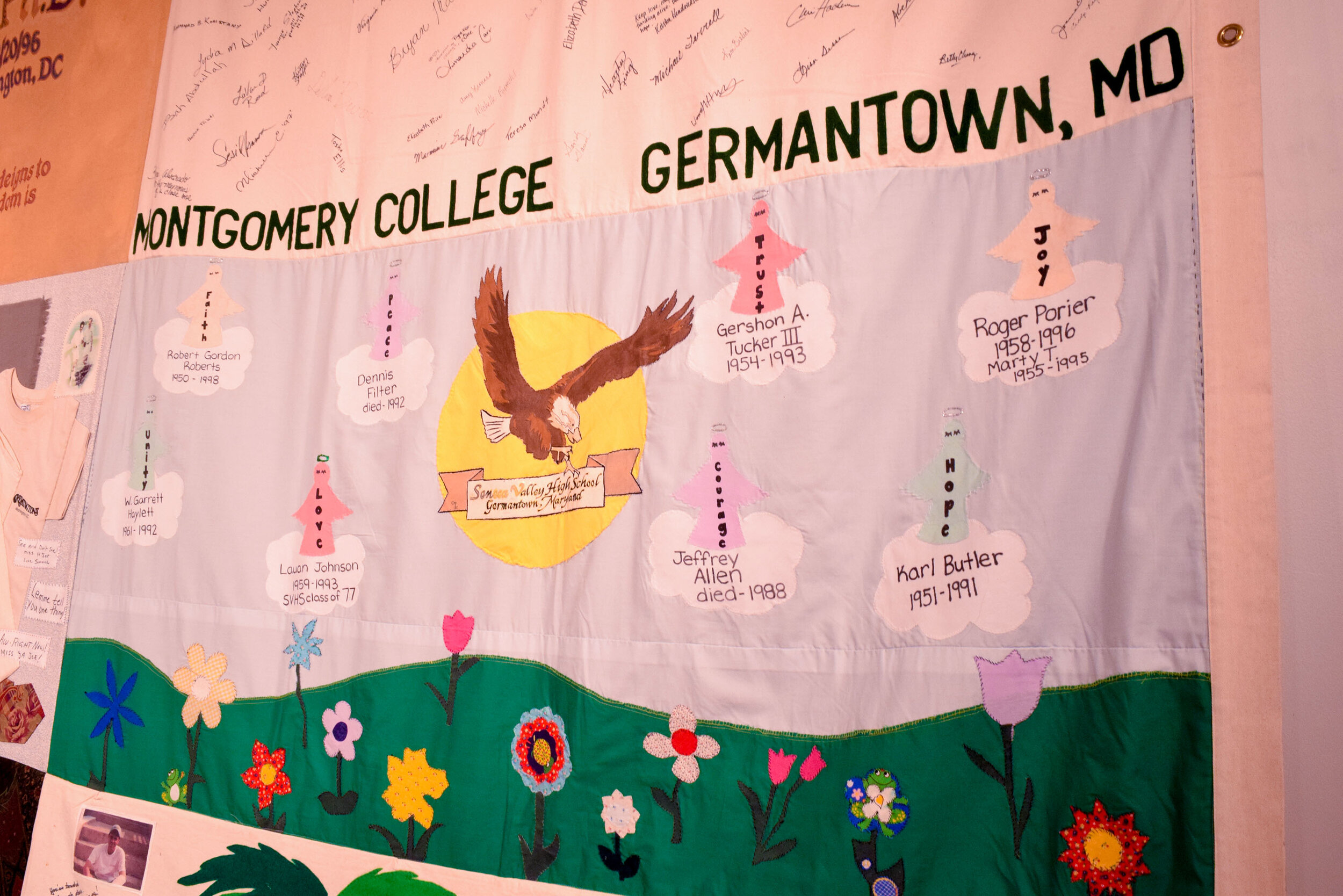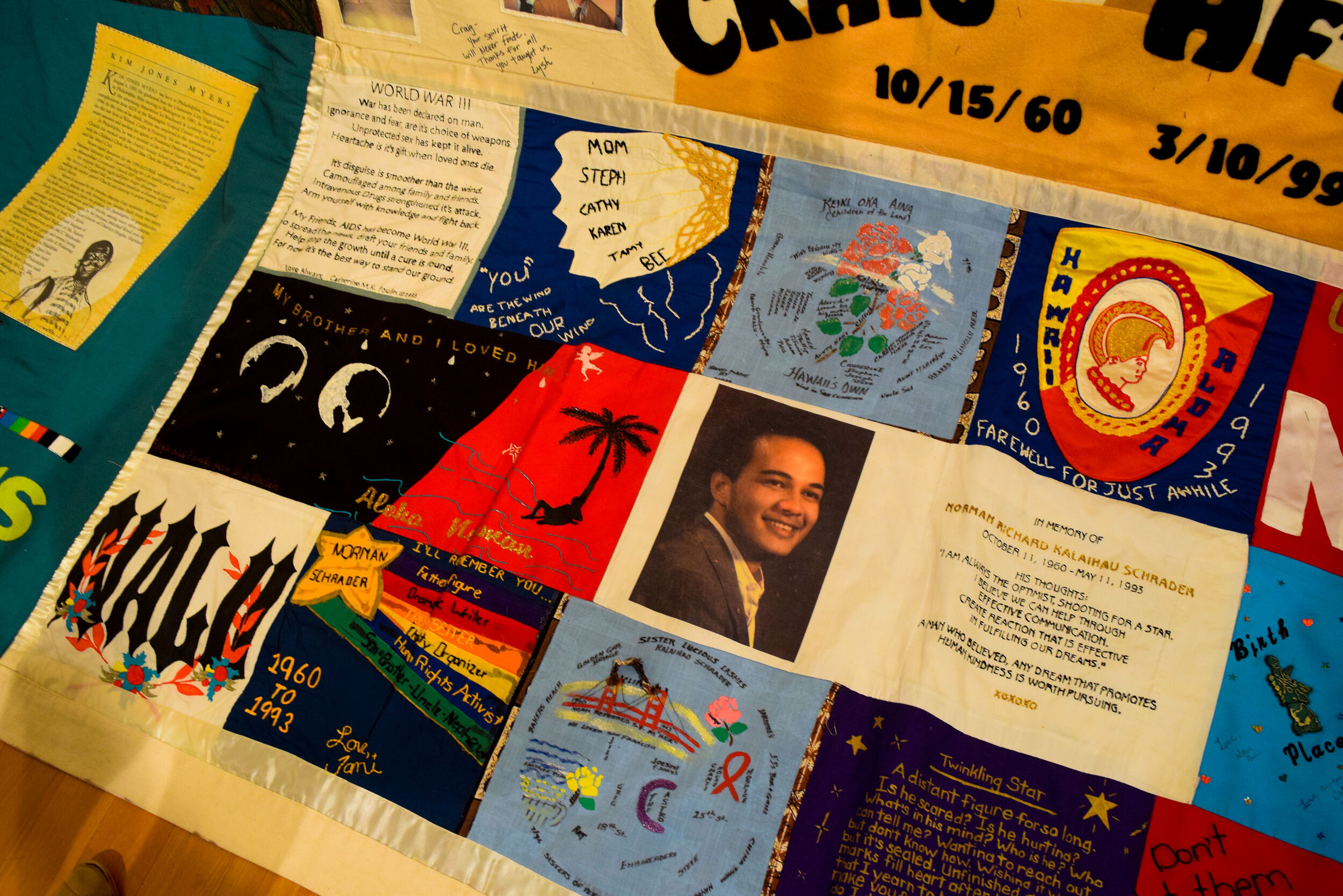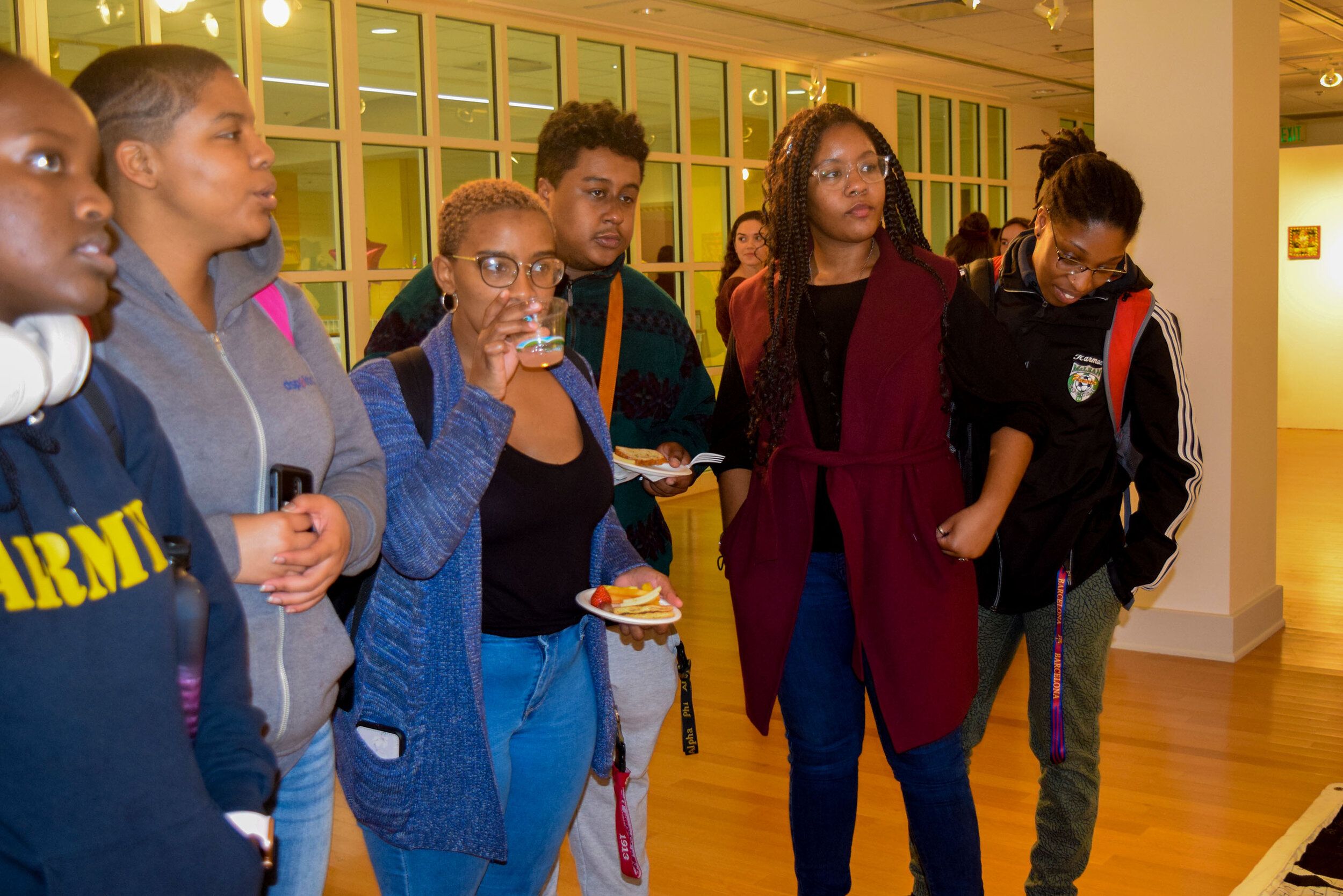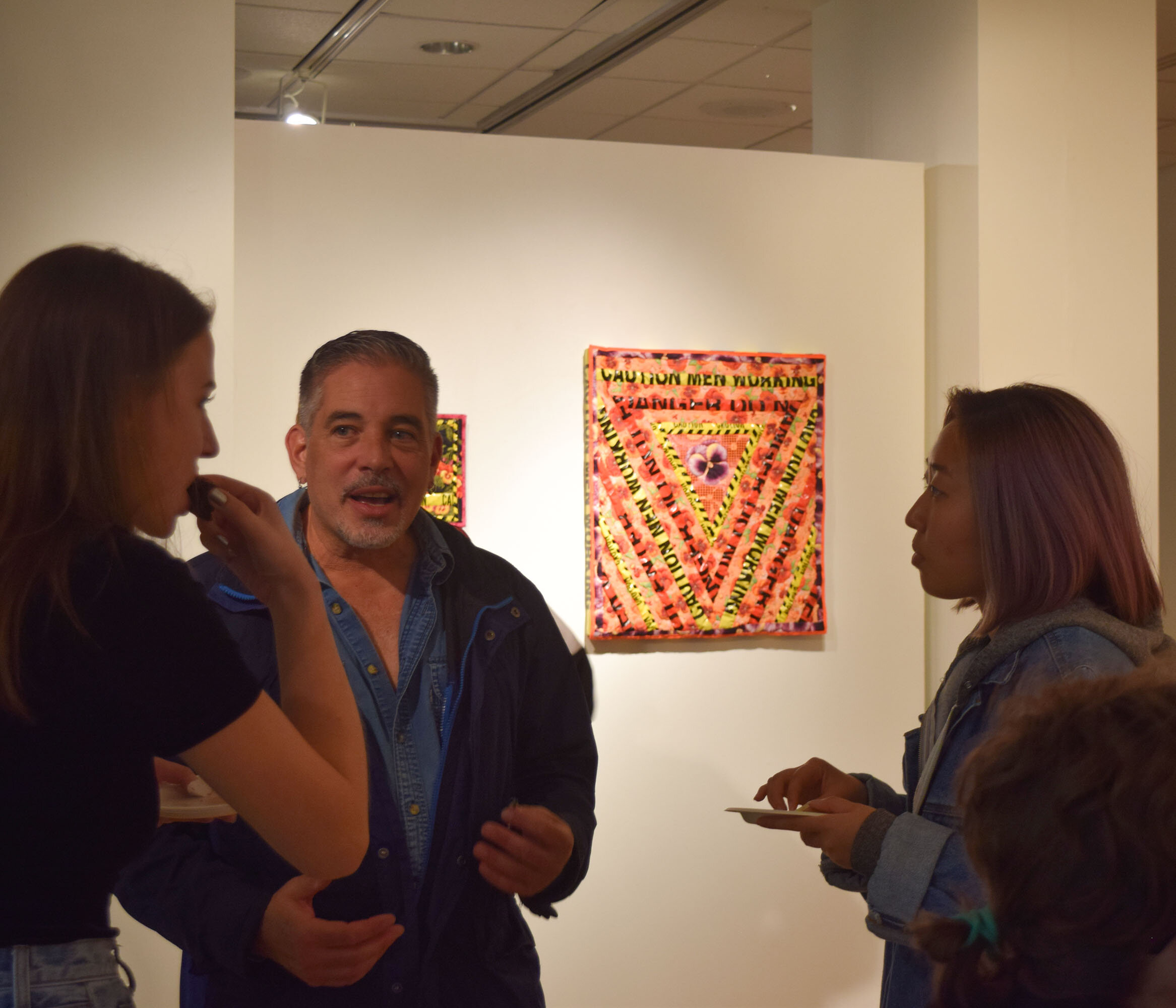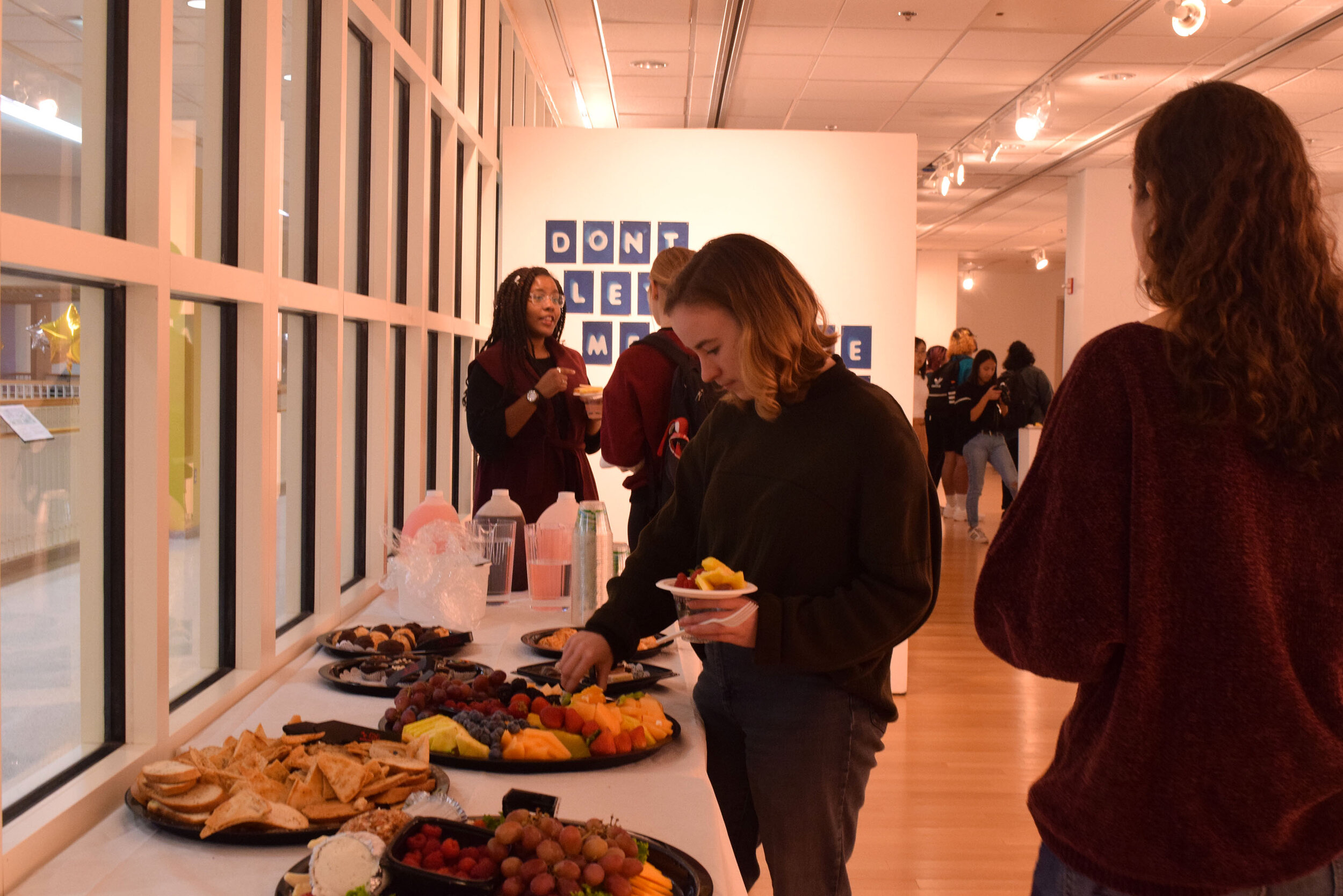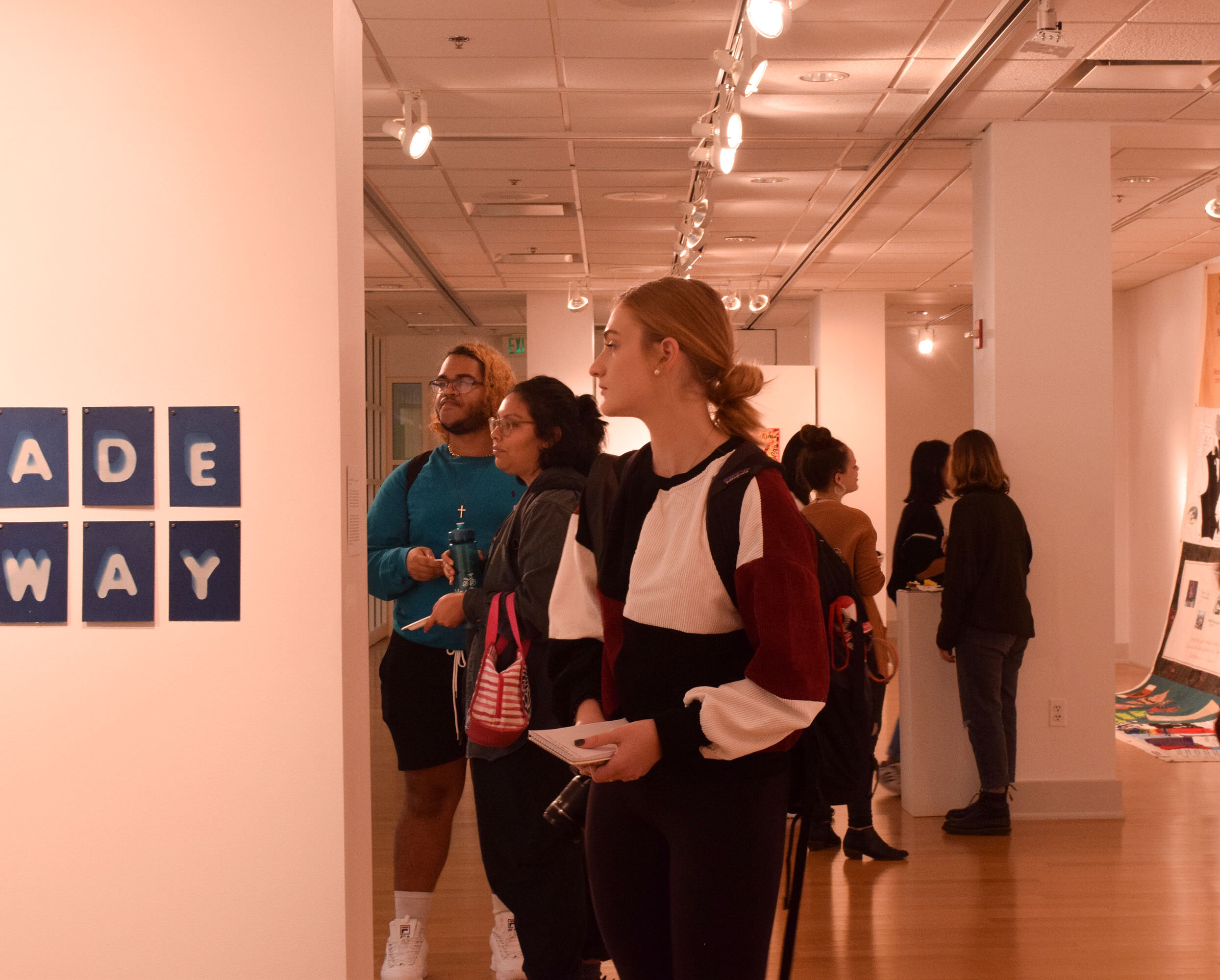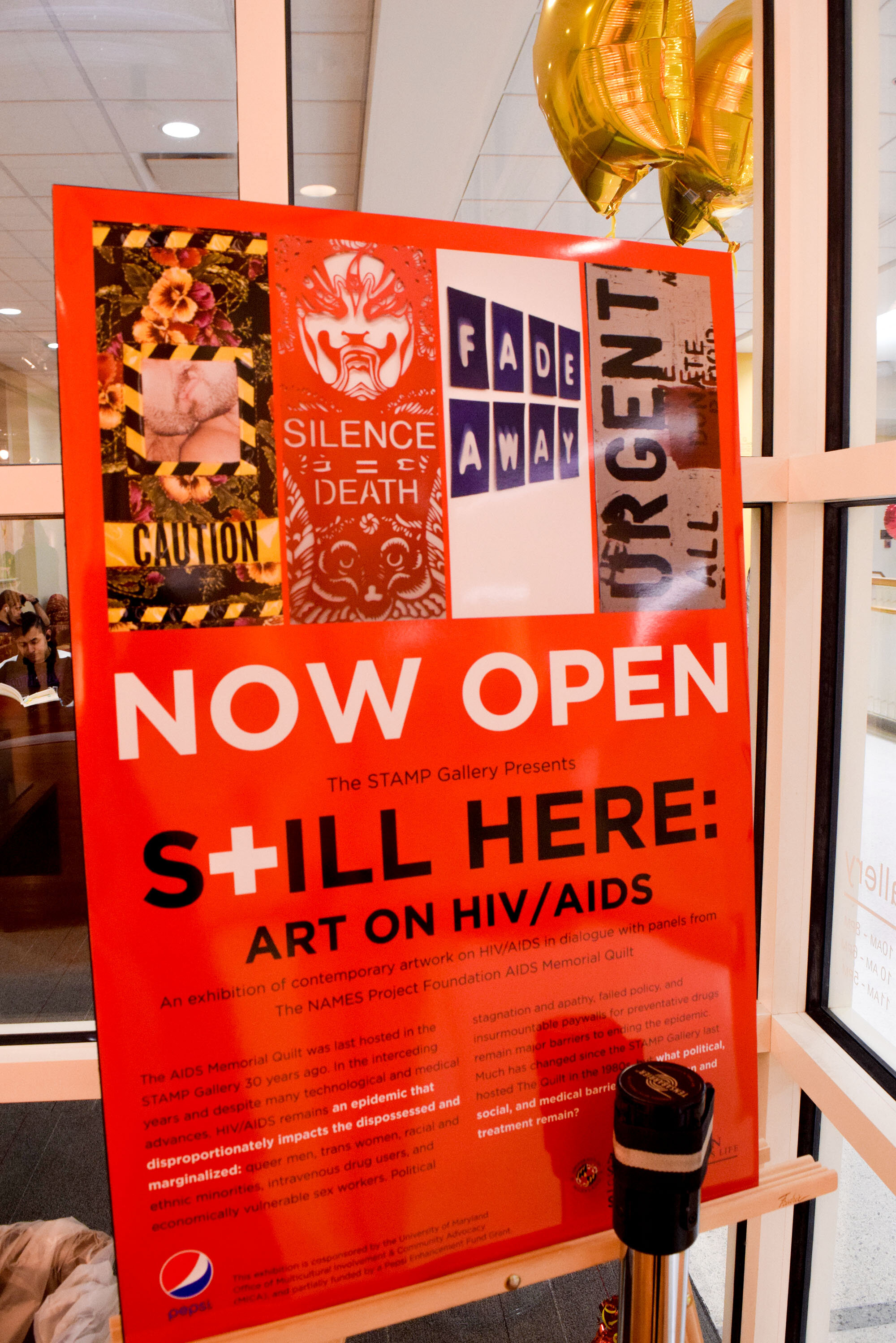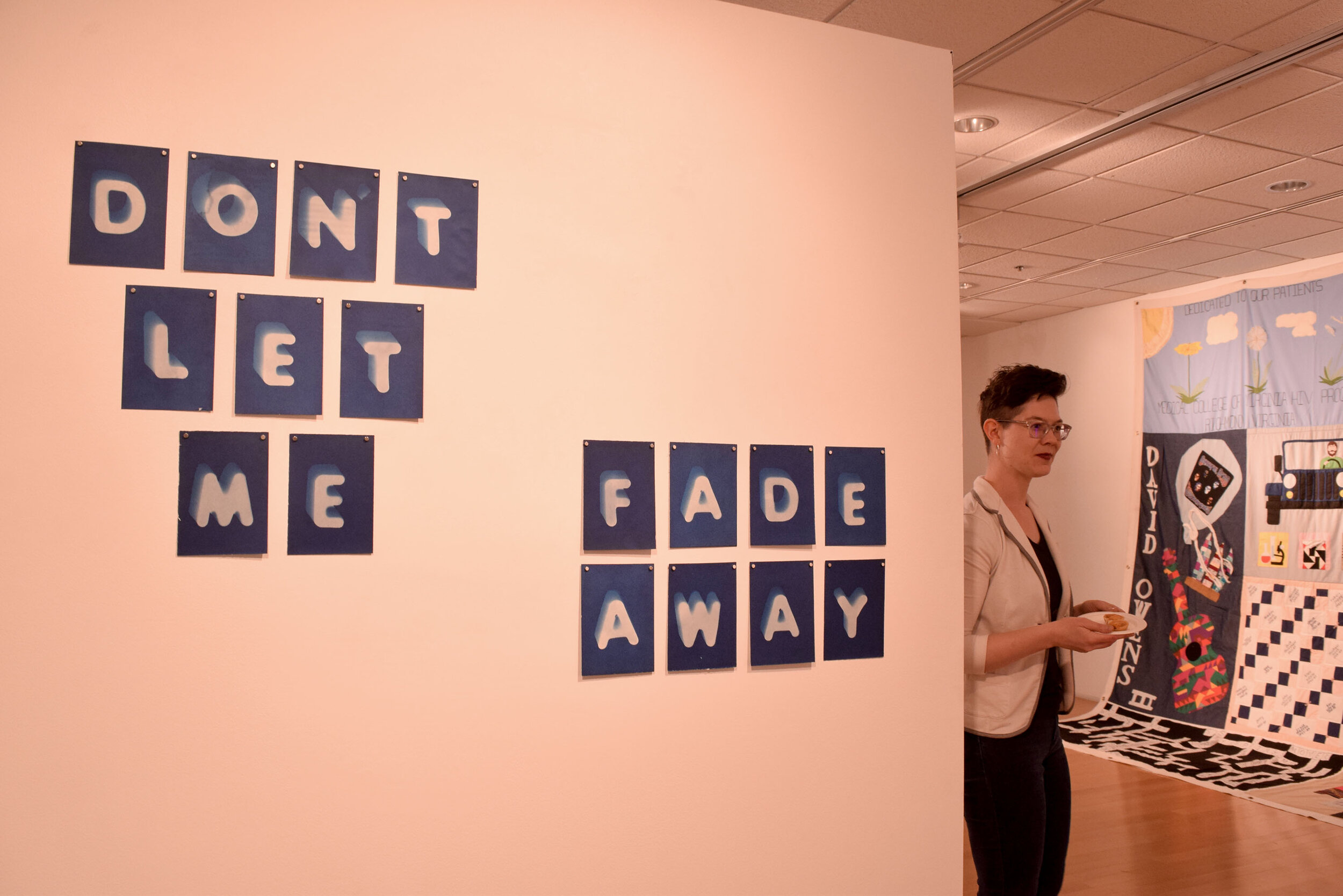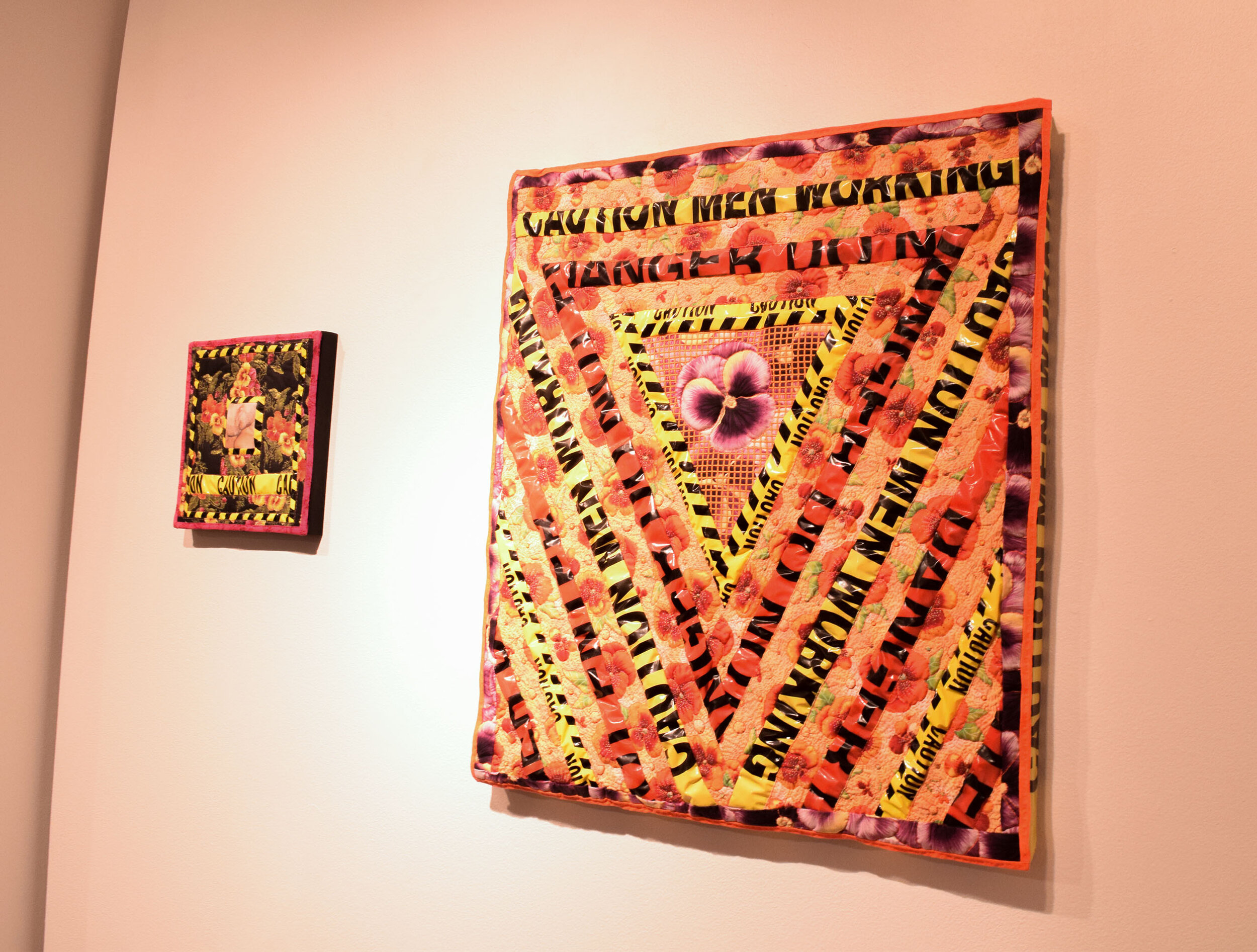New Stamp Gallery exhibition brings campus awareness to the ongoing HIV/AIDS epidemic
The opening reception for the autumn exhibit “Still Here: Art on HIV/AIDS” in the Stamp Gallery on Oct. 29 commemorated artwork from previous years.
The new exhibition features various contemporary pieces, along with quilt panels from The NAMES Project Foundation AIDS Memorial Quilt. The project started amid the AIDS epidemic in the 1980s, and the quilt was first displayed on Oct. 11, 1987 on the National Mall in Washington during the National March on Washington for Lesbian and Gay Rights.
The historical AIDS Memorial Quilt was last displayed in the Stamp Gallery 30 years ago and made its return to the gallery for the exhibit’s opening reception.
“Many on these panels are people who died, and we have art by all currently-living contemporary artists,” said Tara Youngborg, Stamp Gallery manager.
Youngborg mentioned that some of the quilt panels were compiled in the 90s by local schools, including Montgomery College and the University of Maryland. Youngborg wants attendees to learn and connect with the artwork.
“I hope people think a little more about this epidemic that’s extremely urgent and relevant in our own backyard,” Youngborg said.
According to the District of Columbia Department of Health HIV/AIDS, Hepatitis, STD and TB Administration’s most recent report, 1.9% of the city’s population (13,003 people) is known to be living with HIV. Among residents in the district, 4.4% of black males are living with HIV. Ultimately, this is the highest proportion of D.C. residents living with HIV by race/ethnicity and gender identity.
The Stamp Gallery partnered with the Multicultural Involvement & Community Advocacy office to host the exhibition in the gallery.
Collin Vernay, the graduate coordinator for LGBTQ student involvement and advocacy within MICA, discussed the importance of having the exhibition in the heart of campus.
“I think for many young folks, especially for young queer folks, the HIV epidemic seems like something of the past, right? We now have very effective medical treatments for living with HIV, and we also have very effective treatments for the prevention of transmission...youth especially are still at risk for HIV transmission, and in my view, it’s important as well for queer folks to have an understanding of this sort of history and ancestry that comes with the HIV/AIDS epidemic,” Vernay said.
Vernay described the unique community that developed among LGBTQ members in response to the outbreak in the 1980s.
“It was sort of one of the first times, at least in the United States, that we saw this sort of solidarity among LGBTQ folks who were responding to the crisis, and in this way, really forged a community that we know and love today,” Vernay said.
Maria Aragon, a senior film studies major, noted why she came to the opening reception.
“It’s been one of the only LGBTQ-focused art galleries at school for a while. I just really like all of the new artists that have been making art about HIV/AIDS after the epidemic tragedy in the 80s.”
Brianna Nunez, Stamp Gallery graduate assistant, collaborated with Youngborg and Vernay to conceptualize the event and assisted them with determining which art pieces to show in the gallery.
“We worked on finding other artists whose art may be in discourse with the AIDS Memorial quilt about the progress—or lack thereof depending on perspective—for treatment, for assistance, attention, awareness of those individuals living with HIV and AIDS,” Nunez said.
Nunez said she feels a connection with all of the art pieces in the exhibit. She is a history major who not only enjoys the historical significance of the AIDS Memorial Quilt but also the other pieces, which have all been completed in the last six years.
“Those pieces still sort of represent how HIV/AIDS still devastates communities, particularly vulnerable and minority communities, including people of color and people in the queer communities.”
However, Nunez’s favorite piece in the exhibit is Shan Kelley’s “Count Me Out” because the words displayed ignite the conversation about HIV/AIDS.
“It’s such a complex aspect, and we have to talk about it. It affects all of us. Talking about it is the first way to raise awareness. Until we can talk about it and how widely it affects individuals, nothing is going to change or progress.”
Among the attendees was artist John Paradiso, who has two pieces featured in the exhibition: “Caution Pansy” (2017) and “Pansies & Tulips” (2013). Paradiso’s work primarily focuses on identity and sexuality. He served as an HIV-prevention caregiver for about 25 years and worked with patients and their families. He was inspired by the AIDS Memorial Quilt and referred to it as the “largest public art project that’s ever been produced.”
“I have a lot of friends that died in the 80s and 90s and since then, too. I thought I wanna make quilts that talk about surviving the 80s and 90s, you know. What about all the folks that use prevention or were just lucky or whatever to somehow survive like I did?”
Paradiso started making quilts from plastic and caution tape that he found on construction sites in combination with pictures of men from the Internet. He used the bright orange and yellow colors of the caution tape to symbolize HIV prevention and other dangers, such as gay-bashing. Paradiso also incorporated pansy fabric and flowers to soften the work.
“Also, pansy is a gay slur, and I thought it sort of stood in for all gay slurs...I’d rather make a piece that’s pansy and also really pretty. It made nice work,” Paradiso said.
The Still Here: Art on HIV/AIDS exhibition is on display in the Stamp Gallery, located on the main floor in the Stamp Student Union, until Dec. 7.

